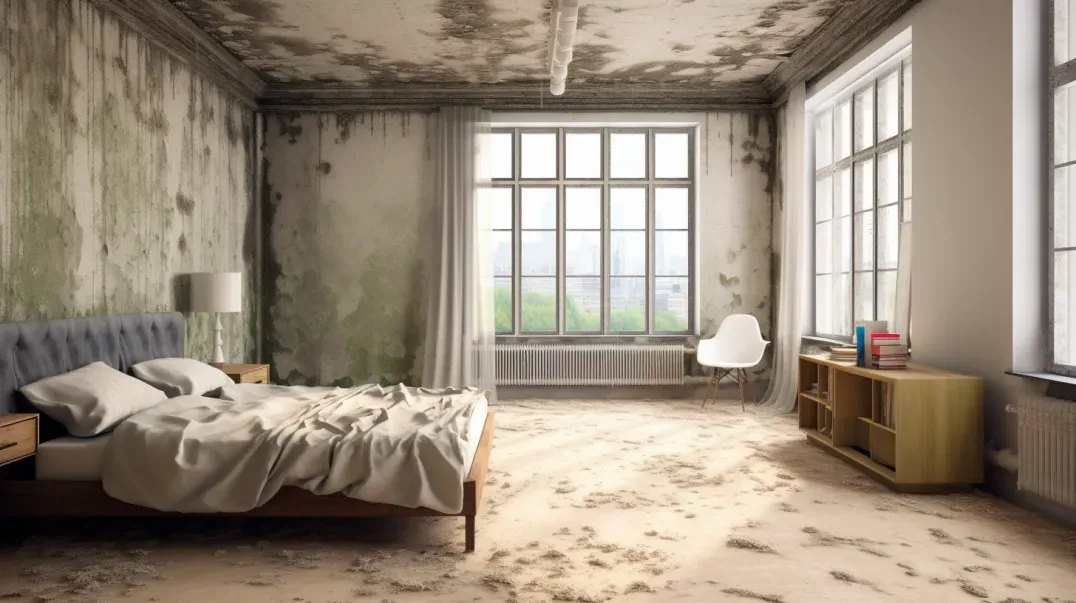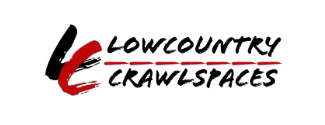The ideal indoor humidity level for preventing mold and ensuring comfort is between 30% and 50%. This range helps minimize the risk of mold growth while maintaining a comfortable living environment.
Mold, a ubiquitous presence in both outdoor and indoor environments, can be more than just an unsightly nuisance; for many, it represents a hidden health hazard capable of triggering allergic reactions and exacerbating respiratory conditions. The key to safeguarding your health and well-being lies in a comprehensive understanding of mold allergies—recognizing the signs, understanding the triggers, and implementing effective strategies for prevention and management. This blog delves into the critical importance of being informed about mold allergies, shedding light on how knowledge and proactive measures can empower individuals to create healthier living spaces and improve their quality of life.
Mold allergies are often overlooked or misunderstood, yet they affect a significant portion of the population, with symptoms ranging from mild to severely debilitating. By exploring the nature of mold allergies, including the types of mold most commonly associated with allergic reactions and the environments in which mold thrives, we aim to equip you with the knowledge needed to identify potential risks and take decisive action. From practical tips for reducing mold exposure in your home to insights on managing symptoms and seeking appropriate medical care, this blog offers a comprehensive guide to navigating the challenges posed by mold allergies.
Join us as we unravel the complexities of mold allergies, offering guidance on prevention, management, and the steps you can take to ensure a healthier, more comfortable living environment. Whether you're a long-time sufferer of mold allergies or simply seeking to enhance your indoor air quality, understanding the intricacies of mold allergies is the first step toward taking control of your health and well-being in the face of this invisible threat.
Understanding Mold Allergies
Mold allergies are a common concern for many individuals, affecting their health and quality of life. Understanding what causes these allergies and recognizing the common symptoms are crucial steps in managing and mitigating their impact. This section delves into the triggers of mold allergies and outlines the typical symptoms experienced by those affected, providing valuable insights for effective prevention and management.
What Causes Mold Allergies?
Mold allergies are triggered by inhaling mold spores, which are tiny, airborne particles produced by mold fungi. These spores can enter indoor environments through open doors, windows, ventilation systems, or attach to clothing, shoes, and pets. When individuals with sensitivities to mold spores inhale them, their immune systems may overreact, treating these spores as invaders and releasing antibodies to attack them. This immune response leads to the allergic reactions associated with mold exposure.
- Mold Growth Conditions: Mold thrives in moist, warm environments. Common areas for indoor mold growth include bathrooms, kitchens, basements, and areas with water damage or high humidity.
- Types of Mold: While there are thousands of mold species, only certain types commonly trigger allergies, such as Alternaria, Aspergillus, Cladosporium, and Penicillium.
Understanding the conditions that promote mold growth and the types of mold that commonly trigger allergies is essential for prevention and reducing exposure.
Common Symptoms of Mold Allergies
The symptoms of mold allergies can vary from person to person but typically include a range of respiratory and other allergic reactions. Common symptoms experienced by those with mold allergies include:
- Nasal Congestion: A blocked or runny nose is a frequent symptom, often accompanied by sneezing.
- Itchy, Watery Eyes: Allergic reactions often cause redness, itching, and watering of the eyes.
- Throat Irritation: Soreness, itchiness, or irritation of the throat can occur, sometimes leading to a cough.
- Skin Irritations: Some individuals may experience skin rashes or hives as a reaction to mold exposure.
- Asthma Exacerbations: For those with asthma, exposure to mold spores can trigger asthma attacks, characterized by wheezing, shortness of breath, chest tightness, and difficulty breathing.
Recognizing these symptoms is crucial for individuals with mold allergies, as early identification and management can help mitigate the severity of reactions and improve overall well-being.
Identifying and Reducing Mold Exposure
Mold exposure can lead to various health issues, especially for individuals with mold allergies or respiratory conditions. Recognizing mold in your environment and implementing strategies to reduce exposure are essential steps in creating a healthier living and working space. This section offers tips for identifying mold in homes and workplaces, along with practical steps to minimize its presence.
Recognizing Mold in Your Environment
Mold can grow on almost any substance when moisture is present. Identifying mold involves more than just spotting visible growth; it also requires recognizing the conditions that allow mold to thrive. Here are tips for recognizing mold in your environment:
- Visual Inspection: Look for visible signs of mold growth, which can appear as fuzzy or slimy patches in various colors (black, white, green, red, or blue).
- Musty Odors: A musty, earthy smell often indicates mold presence, even if it's not visible.
- Water Damage: Areas with water damage, leaks, or high humidity are prone to mold growth. Inspect walls, ceilings, and floors for discoloration, peeling paint, or warping.
- Health Symptoms: If you or others experience sudden allergic reactions or respiratory issues in specific areas, mold might be present.
Being vigilant and regularly inspecting your environment for these signs can help you identify mold early and take action to address it.
Strategies to Reduce Mold Exposure
Reducing mold exposure involves controlling moisture levels and eliminating conditions that allow mold to grow. Here are practical steps to minimize mold presence in your living and working areas:
- Control Humidity: Use dehumidifiers and air conditioners to maintain indoor humidity levels between 30% and 50%.
- Improve Ventilation: Ensure adequate ventilation in high-moisture areas, such as bathrooms and kitchens, by using exhaust fans and opening windows when possible.
- Fix Leaks Promptly: Repair any plumbing leaks or issues causing water accumulation as soon as they're detected.
- Clean and Dry Wet Areas: Clean up spills and dry wet areas within 24-48 hours to prevent mold growth.
- Remove Moldy Materials: If mold growth is extensive, it may be necessary to remove and replace mold-infested materials, such as carpeting, drywall, or insulation.
By implementing these strategies, you can significantly reduce mold exposure in your environment, contributing to a healthier and safer indoor space.
Mold Allergy Prevention in the Home
Mold allergies can significantly impact the health and comfort of individuals sensitive to mold spores. Preventing mold growth and reducing exposure to mold allergens in the home are essential steps in managing mold allergies. This section highlights the importance of controlling indoor humidity and outlines effective cleaning and maintenance practices to minimize mold spores and allergens.
Controlling Indoor Humidity
Maintaining optimal humidity levels is crucial in preventing mold growth, as mold spores thrive in moist environments. Here's why controlling indoor humidity is important and how to achieve it:
- Optimal Humidity Levels: The ideal indoor humidity level to prevent mold growth is between 30% and 50%. These levels can be monitored using a hygrometer, a device that measures humidity.
- Use of Dehumidifiers: In areas prone to high humidity, such as basements or bathrooms, using a dehumidifier can help maintain the desired humidity levels, making the environment less hospitable to mold.
- Ventilation: Improve air circulation and reduce moisture by ensuring proper ventilation throughout the home. Use exhaust fans in bathrooms and kitchens, and open windows when weather permits to allow moisture to escape.
- Addressing Moisture Sources: Identify and address sources of moisture, such as leaks, condensation, or poor drainage around the home's foundation, to prevent water accumulation and mold growth.
By controlling indoor humidity, homeowners can create an environment that discourages mold growth, thereby reducing the risk of mold allergies.
Regular Cleaning and Maintenance
Regular cleaning and maintenance are key to reducing mold spores and allergens in the home. Here are effective practices to incorporate into your cleaning routine:
- Dust and Vacuum Regularly: Use a vacuum with a HEPA filter to capture mold spores, and dust surfaces with a damp cloth to prevent spores from becoming airborne.
- Clean Wet Areas: Wipe down surfaces in bathrooms and kitchens where moisture accumulates to prevent mold growth. Pay special attention to tile grout, shower curtains, and appliances like refrigerators and air conditioners.
- Mold-Resistant Products: Consider using mold-resistant paint on walls and installing mold-resistant shower liners or window treatments in areas susceptible to moisture.
- Routine Inspections: Regularly inspect your home for signs of mold or moisture issues, especially in hidden areas like under sinks, in basements, and around windows. Early detection can prevent widespread mold growth.
Implementing these cleaning and maintenance practices can significantly reduce the presence of mold spores and allergens in the home, providing a safer and healthier environment for individuals with mold allergies.
Treatment Options for Mold Allergies
Mold allergies can cause uncomfortable symptoms and significantly impact daily life for those affected. Fortunately, several treatment options ranging from over-the-counter and prescription medications to long-term strategies like allergy shots and immunotherapy are available. This section provides an overview of these treatments, offering insights into how they can help manage mold allergy symptoms and improve quality of life.
Over-the-Counter and Prescription Medications
For immediate relief from mold allergy symptoms, various over-the-counter (OTC) and prescription medications can be effective. Here's an overview of commonly used medications:
- Antihistamines: These medications help relieve sneezing, itching, and runny nose by blocking histamine, a substance your body makes during an allergic reaction.
- Decongestants: Decongestants can provide temporary relief from nasal stuffiness by shrinking swollen tissues in the nasal passages.
- Nasal Corticosteroids: These are prescription nasal sprays that reduce inflammation and are considered the most effective medication for controlling allergic rhinitis (hay fever) symptoms.
- Leukotriene Inhibitors: Prescription medications that block leukotrienes, chemicals involved in the body's allergic response, can also be used to treat allergy symptoms.
It's important to consult with a healthcare provider to determine the most appropriate medication based on your symptoms and health history.
Allergy Shots and Immunotherapy
For long-term relief, allergy shots (subcutaneous immunotherapy) and sublingual immunotherapy offer options to decrease sensitivity to mold allergens. Here's how these treatments work:
- Allergy Shots: This treatment involves regular injections of small amounts of mold allergens over several years. The goal is to gradually desensitize the body's immune system to mold, reducing the severity of allergic reactions over time.
- Sublingual Immunotherapy: This newer form of immunotherapy involves placing a tablet containing the allergen under the tongue daily. It's currently available for certain allergens, and research is ongoing for its effectiveness against mold allergies.
Both allergy shots and sublingual immunotherapy should be administered under the guidance of an allergist or immunologist, who can assess your suitability for these treatments and monitor your progress.
Lifestyle Adjustments for Managing Mold Allergies
Living with mold allergies requires not just medical treatment but also lifestyle adjustments to minimize exposure to mold allergens. By adopting certain daily habits and making modifications to your living environment, you can significantly reduce allergic reactions and improve your quality of life. This section explores practical lifestyle changes and home modifications that can help create a mold-allergy-friendly environment.
Daily Habits to Minimize Allergic Reactions
Incorporating specific habits into your daily routine can help reduce your exposure to mold allergens. Here are some effective strategies:
- Stay Informed About Weather: Mold spore counts increase in warm, humid weather and after periods of rain. Stay indoors on days when mold counts are high.
- Use Protective Gear: When doing outdoor activities like gardening or yard work, wear a mask to reduce inhalation of mold spores.
- Shower After Being Outdoors: Showering and changing clothes after spending time outside can help remove mold spores that may have attached to your skin or clothing.
- Keep Indoor Air Clean: Use HEPA filters in your air conditioning and heating systems to trap mold spores. Regularly clean or replace these filters according to the manufacturer's recommendations.
Adopting these habits can help minimize your exposure to mold allergens and reduce the frequency and severity of allergic reactions.
Creating a Mold-Allergy Friendly Home
Making specific modifications to your home can further reduce your exposure to mold and create a safer environment for allergy sufferers. Consider the following recommendations:
- Control Humidity: Use dehumidifiers to maintain indoor humidity levels below 50% to inhibit mold growth. Monitor humidity levels with a hygrometer.
- Improve Ventilation: Ensure adequate ventilation in high-moisture areas such as bathrooms, kitchens, and laundry rooms. Use exhaust fans to remove moisture-laden air.
- Fix Water Leaks: Promptly repair any plumbing leaks or water damage to prevent mold growth. Inspect your home regularly for signs of moisture problems.
- Choose Mold-Resistant Materials: When renovating or decorating, opt for mold-resistant paint, drywall, and flooring materials, especially in areas prone to moisture.
By implementing these home modifications, you can create an environment that is less conducive to mold growth and safer for individuals with mold allergies.
FAQs
Contact Lowcountry Crawlspaces Today!
Lowcountry Crawlspaces will do everything we can to ensure your experience with us is excellent.
Request A FREE Estimate
CHECKOUT RECENT POST



Schedule Your FREE Crawl Space Evaluation Today
There Is No Crawl Space Job We Can’t Fix!




